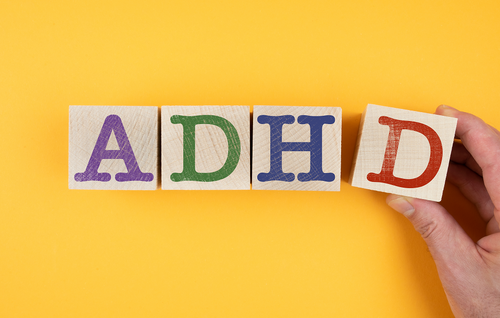A Family Guide to Understanding ADHD Symptoms
If you're reading this, perhaps you're a parent noticing certain behaviours in your child that make them different from their peers. Or maybe you're an adult who's lived a lifetime of feeling "different", and you're beginning to wonder if there's a reason. This is a space where we understand your concerns, your fears, and your hopes. It's a place where we can explore the world of ADHD or Attention Deficit Hyperactivity Disorder together, offering a helping hand as you navigate this journey.
ADHD, or Attention Deficit Hyperactivity Disorder, is a prevalent neurodevelopmental condition, impacting children and adults alike. Recognised by persistent patterns of inattention, impulsivity, and hyperactivity, ADHD often affects daily functioning and overall quality of life. For Australian families coping with this diagnosis, understanding ADHD symptoms and their impact is crucial in effectively managing the condition.
What is ADHD?
ADHD is a neurodevelopmental condition that affects both children and adults. It's like having a brain that's wired differently - it doesn't mean you or your child is broken or less capable, just different. In Australia, about one in 20 people live with this difference, making ADHD one of the most common psychiatric disorders diagnosed in children. However, it's not just a childhood condition; many adults continue to experience symptoms and discover their ADHD diagnosis later in life.
What Does ADHD Look Like?
The Diagnostic and Statistical Manual of Mental Disorders (5th Edition), or DSM-5, provides a comprehensive list of ADHD symptoms. But let's break it down in simpler, everyday terms.
People with ADHD often experience two major types of symptoms: Inattention and Hyperactivity/Impulsivity, or a combination of both.
- Inattention
- Individuals with Inattentive ADHD may often:
- Overlook or miss details, make careless mistakes in schoolwork or during other activities
- Have difficulty sustaining attention in tasks or play activities
- Seem not to listen when spoken to directly
- Fail to follow through on instructions, fail to finish schoolwork or duties in the workplace
- Have difficulty organising tasks and activities
- Avoid, dislike, or be reluctant to engage in tasks requiring sustained mental effort
- Lose things necessary for tasks or activities
- Be easily distracted by extraneous stimuli
- Forgetful in daily activities
- Hyperactivity and Impulsivity
Those exhibiting signs of hyperactivity and impulsivity might frequently:
- Fidget with or tap their hands or feet, or squirm in their seat
- Leave their seat in situations where remaining seated is expected
- Run about or climb in situations where it is inappropriate
- Be unable to play or engage in leisure activities quietly
- Act as if "on the go," or appear "driven by a motor"
- Talk excessively
- Blurt out an answer before a question has been completed
- Have difficulty awaiting their turn
- Interrupt or intrude on others
Living With ADHD
Recognising these signs is only the first step. ADHD can affect more than just individual behaviour - it can impact self-esteem, academic performance, and even relationships.
For children, ADHD might mean more than just trouble concentrating in school. It can mean feeling different, having trouble making friends, or being labelled as "naughty" or "difficult".
For adults, ADHD can add an extra layer of challenge to daily responsibilities, job performance, and personal relationships. It could mean struggling with time management, organisation, and goal-setting.
But remember, while ADHD presents challenges, it doesn't define you or your child. You're not alone in this journey, and there are resources available to help.
ADHD Management in Australia
In Australia, we have a strong support system for individuals with ADHD and their families. The road to managing ADHD involves understanding the condition (psychoeducation), behavioural management strategies, and, in some cases, medication.
Psychoeducation is about learning more about ADHD, its effects, and how to cope. It's about replacing fear and uncertainty with understanding and acceptance. Behavioural management strategies can help alter behaviour positively, such as setting clear expectations. Medication, including stimulants and non-stimulants, can also help control ADHD symptoms.
ADHD Australia is a wonderful resource offering information and support for those affected by ADHD. Remember, there's no shame in reaching out and asking for help.
Conclusion
ADHD is a common condition affecting many Australian families. Recognising the symptoms of ADHD and understanding its impact is the first step in the journey towards effective management. It's important to remember that while ADHD can present significant challenges, there are various strategies and resources available that can help manage the condition and improve the quality of life for those diagnosed with it.
The journey with ADHD is not a solitary one. Australian healthcare professionals, educators, and support groups stand ready to assist families in navigating this path. Through greater understanding, timely intervention, and appropriate management strategies, individuals with ADHD can lead successful, fulfilling lives.
ADHD, like any other health condition, necessitates understanding, patience, and support. As we continue to learn more about this disorder, our ability to help those affected will only improve. As a society, it's our responsibility to provide the necessary support and encouragement to our friends, family members, and community members dealing with ADHD. Their struggle is our struggle, and their success is our success.
References
- American Psychiatric Association. (2013). Diagnostic and Statistical Manual of Mental Disorders (5th ed.). Arlington, VA: Author.
- Sciberras, E., Mulraney, M., & Silva, D. (2017). The International Prevalence, Epidemiology, and Clinical Phenomenology of Impulsive-Compulsive Behaviours in Pediatric ADHD: a population-based study. The Australian and New Zealand Journal of Psychiatry.
- Kooij, J. J., Bijlenga, D., Salerno, L., Jaeschke, R., Bitter, I., Balázs, J., Thome, J., Dom, G., Kasper, S., Nunes Filipe, C., Stes, S., & Mohr, P. (2019). Updated European Consensus Statement on diagnosis and treatment of adult ADHD. European Psychiatry.
- American Psychiatric Association. (2013). Attention-Deficit/Hyperactivity Disorder. In Diagnostic and Statistical Manual of Mental Disorders (5th ed.). Arlington, VA: Author.
- Hoza, B. (2007). Peer functioning in children with ADHD. Journal of Pediatric Psychology.
- Asherson, P., Buitelaar, J., Faraone, S. V., & Rohde, L. A. (2016). Adult attention-deficit hyperactivity disorder: key conceptual issues. The Lancet Psychiatry.
- Australian ADHD Professionals Association (AADPA). (2019). ADHD in Adults: A guide for general practitioners.
- ADHD Australia. (2021). Understanding ADHD. Retrieved from https://www.adhdaustralia.org.au/
Recent Posts
-
Navigating Christmas Food Anxiety Like a Pro
Christmas is supposed to be joyful, right? But if your child has ARFID, sensory sensitivities, or fo …Dec 11, 2025 -
The 5 Love Languages of Neurodivergent Kids
It’s not always words and hugs. Sometimes it’s snacks, stims, and sitting silently side by side. Whe …Dec 02, 2025 -
“I Didn’t Sign Up for This” – The Unexpected Talents of Parenting Neurodivergent Kids
When I first became a parent, I thought I was signing up for things like cuddles, bedtime stories, a …Nov 17, 2025




